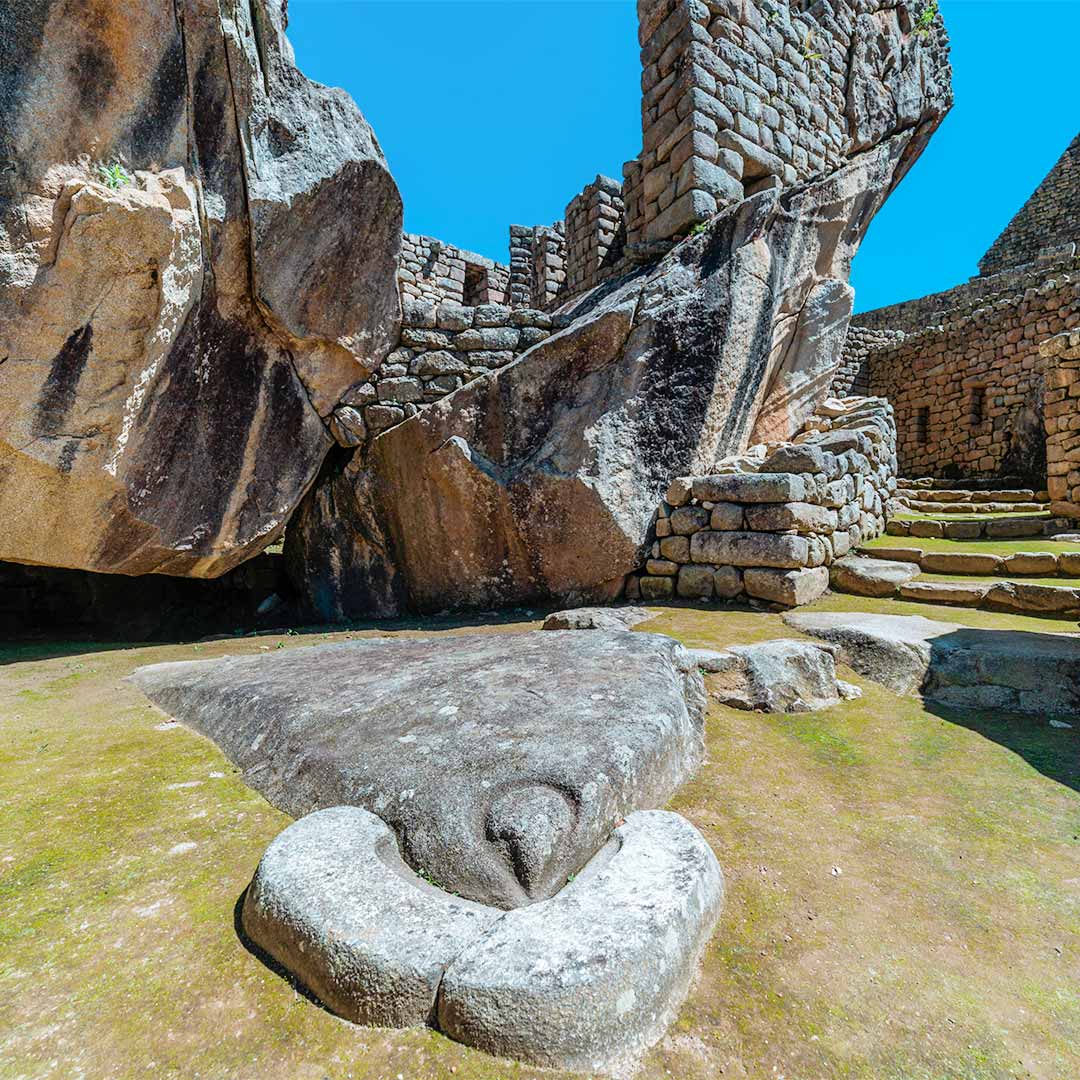Machu Picchu, the lost city of the Incas, is a marvel that continues to fascinate historians, archaeologists, and travelers alike. Among its many wonders is the Temple of the Condor, a site shrouded in mystery and rich with history. Let's embark on a journey to uncover the secrets of this ancient temple.
What will you find here?
- What is the Temple of the Condor?
- Temple of the Condor: 3D Temple in Machu Picchu
- Where is the Temple of the Condor?
- The Prisons of the Temple of the Condor
- Advice from people who have been there
- What is the Altar of the Condor in Machu Picchu?
What is the Temple of the Condor?
The Temple of the Condor is a unique archaeological feature within Machu Picchu, revered for its symbolic representation of the Andean Condor, a bird deeply significant in Inca culture. This temple is a striking example of the Incas' skilled stone craftsmanship and their spiritual connection to nature.
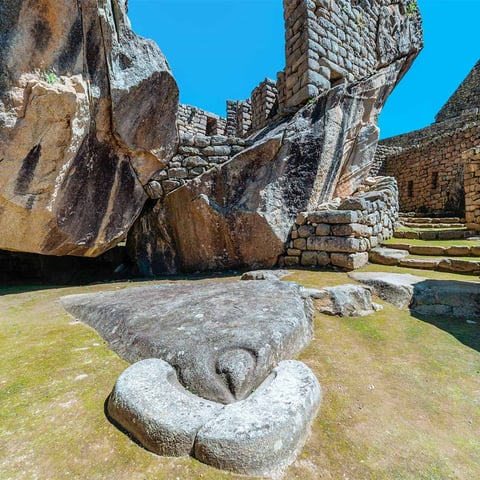
Temple of the Condor: 3D Temple in Machu Picchu
The Temple of the Condor in Machu Picchu is not just a structural marvel but also a three-dimensional representation of the Condor. The Incas ingeniously carved a massive rock to resemble the bird’s wings, with the head and neck formed from smaller stones on the ground, creating a lifelike depiction of this sacred bird.
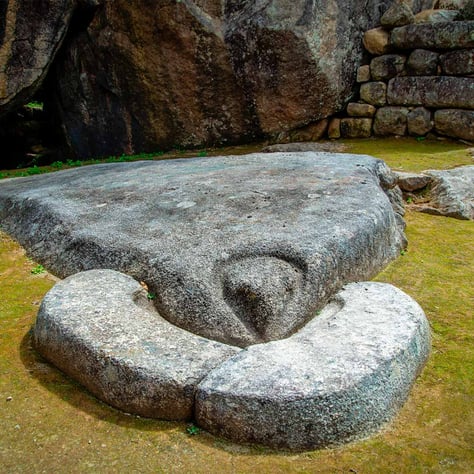
Where is the Temple of the Condor?
The Temple of the Condor is located within the historic sanctuary of Machu Picchu in Peru. Specifically, it's situated in the urban sector of the Machu Picchu archaeological site, which is divided into agricultural and urban areas. The temple is found near the residential area of the site, indicating its importance in the daily lives of the Incas who inhabited this ancient city.
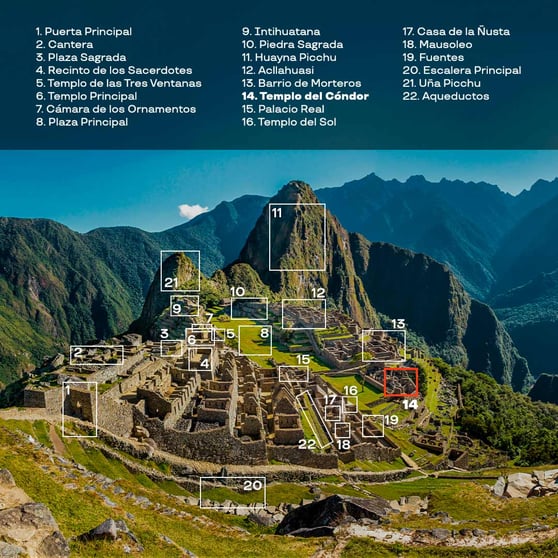
The Prisons of the Temple of the Condor
The Prisons of the Temple of the Condor at Machu Picchu represent a fascinating and somewhat enigmatic aspect of this ancient Incan site. While the temple itself is primarily known for its unique architecture symbolizing the Andean condor, the adjacent structures are believed to have served as prisons or holding cells. Here are some key details about these intriguing structures:
- Location and Layout:
- The prisons are located near the Temple of the Condor, in the urban sector of Machu Picchu.
- They consist of a series of small, cave-like enclosures carved into the rock.
- Purpose and use:
- Historical interpretations suggest these chambers were used to confine people, possibly for punitive or disciplinary purposes.
- The exact nature of their use remains a topic of research and speculation among archaeologists.
- Architectural features:
- The prison cells are characterized by their small size and the presence of niches in the walls, typical of Incan architecture.
- Some cells have trapezoidal-shaped doors and windows, with evidence of security features like locking mechanisms.
- Cultural significance:
- Their proximity to the Temple of the Condor implies that these structures may have had a ceremonial or ritualistic purpose in addition to functioning as prisons.
- The Incas are known to have had a complex societal and judicial system, and these prisons might provide insights into how law and order were maintained in this advanced civilization.
Advice from people who have been there
- Start Early: To avoid the crowds and enjoy a more peaceful experience, start your visit to Machu Picchu early in the morning. This also provides better opportunities for photos with fewer people around.
- Hire a Knowledgeable Guide: Guides can provide in-depth historical context and point out details you might otherwise miss. They can also share stories and legends that bring the site to life.
- Wear Comfortable Shoes: The terrain in Machu Picchu is uneven and involves a lot of walking, sometimes on steep and rocky paths. Comfortable, sturdy footwear is essential.
- Check the Weather and Dress Appropriately: The weather can be unpredictable, so dress in layers. Bring rain gear, especially during the rainy season (November to March).
- Stay Hydrated and Bring Snacks: There are no food vendors inside Machu Picchu, so bring water and some snacks, keeping in mind the no-litter policy.
- Respect the Site: Follow the rules set by the site management, such as not climbing on the ruins and sticking to designated paths. This helps preserve the site for future generations.
- Plan Your Route: Decide in advance what you want to see, especially if your time is limited. The Temple of the Condor, for example, is a bit off the main paths and can be missed if you're not actively looking for it.
- Take Time to Absorb the Atmosphere: Beyond the historical and architectural significance, Machu Picchu has a unique atmosphere. Take some time to sit and soak in the surroundings.
- Photography Tips: Early morning or late afternoon offers the best light for photography. Also, be patient to get clear shots without the crowds.
- Acclimatize to the Altitude: If you’re not used to high altitudes, spend a day or two in Cusco or the Sacred Valley to acclimatize before visiting Machu Picchu.
What is the Altar of the Condor in Machu Picchu?
The altar is part of the temple complex, believed to have been used for religious and ceremonial purposes, further emphasizing the spiritual significance of the condor in Incan mythology.
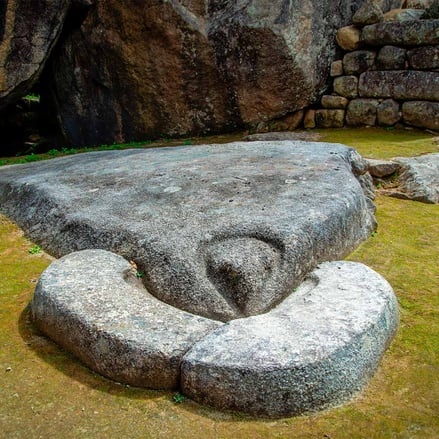
Frequently asked questions (FAQs)
- Is the Temple of the Condor accessible to all visitors of Machu Picchu?
Yes, it is accessible to all visitors and is a must-see part of the Machu Picchu experience.
- What is the best way to learn about the temple?
A guided tour is highly recommended to gain in-depth knowledge and understand the temple's significance.
- Can you touch the structures in the Temple of the Condor?
Touching the ancient structures is generally discouraged to preserve their integrity.

